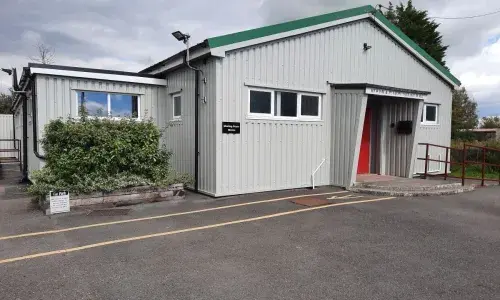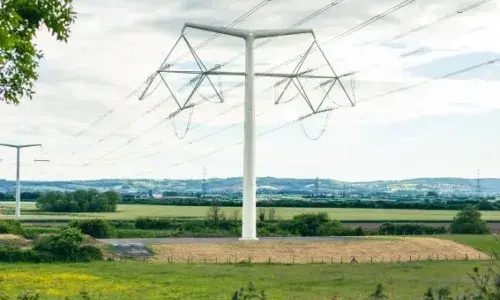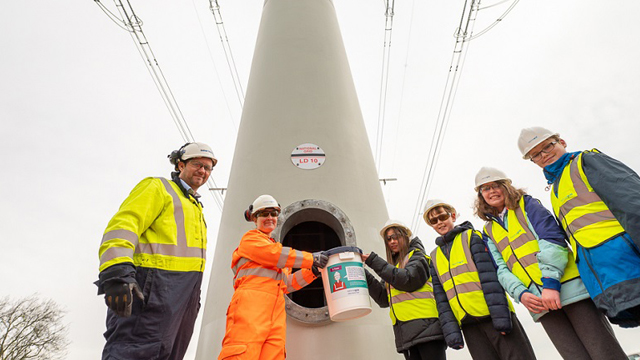
History in the making
Local students place time capsule inside East Huntspill T-pylon
With the conductors now in place, National Grid and its contractor Balfour Beatty have this month completed construction all 48 of the new T-pylons on the southern section of the Hinkley Connection between Bridgwater and Loxton.
And on Thursday 28 April, school children from East Huntspill Academy near Highbridge in Somerset were invited onto site to add the finishing touch to one of the pylons. The Year 6 pupils placed a time capsule inside the hollow stem of ‘their’ T-pylon, located close to the village. The contents were created by pupils to mark the historic milestone of the world’s first T-pylons being built in Somerset.
The East Huntspill Academy time capsule is one of 20 capsules created by local schools that will be placed inside T-Pylons spanning the 57-kilometre Hinkley Connection Project route. When all 116 T-pylons are completed, they will connect low-carbon energy from Hinkley Point C power station to six million homes and businesses across the country, playing a key role in supporting the UK’s net zero ambitions.
After a tour of the pylon, a question-and-answer session and a peek inside, the children handed over their capsule to National Grid engineer Harriet Dal Din. Rob Stephenson from Balfour Beatty placed it inside and the hatch was then sealed and bolted.
The operational life of T-Pylons, the first new design for pylons for almost a century, is around 70-80 years. When planning their time capsule, the children wanted children in the future to learn what life was like for them.
The East Huntspill pupils, ranging in age from 4 to 11 years old, decided to include self-portraits from the younger children and ideas about how the school might have changed and how we’ll be using energy in the future from the older children. They also included parent letters, photographs newsletters, maths equipment and a Covid test and mask, to demonstrate their unprecedented experience of living through a global pandemic.
Steve Davis, Principal of East and West Huntspill Primary Academies, said: “We’ve really enjoyed working with National Grid and give our students the chance to make their mark on our local history. The time capsule project really captured the whole school’s imagination and it was so special for our year sixes to be able to get so close to ‘their’ pylon and see the time capsule placed inside – they felt like VIPs.”
Rhiann Emery, a Year 6 Teaching Assistant who accompanied the children, added: “The children loved seeing the pylons up close and were excited to tell the rest of school on their return. There were lots of questions from our budding engineers – all brilliantly answered by the team. We learned so much.”
James Goode, Project Director for National Grid’s Hinkley Connection Project, commented: “The Hinkley Connection Project is vital to the UK’s transition to net zero and we want to use it to spark young people’s interest in STEM and even future generations of engineers. We’ve loved seeing what the pupils put in their time capsules and hear their ideas on how we live and use energy will change in their lifetime.”
Image
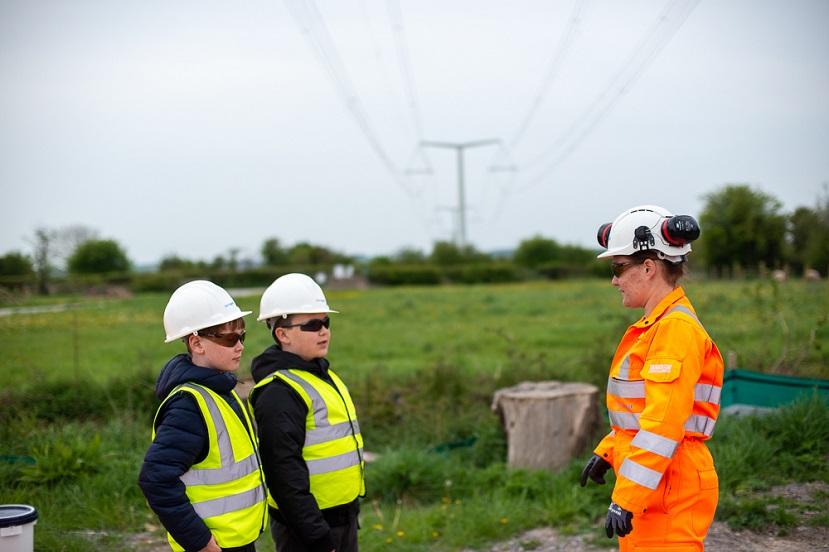
Pupils from East Huntspill School quiz National Grid's Harriet Dal Din about the T-pylons | Image
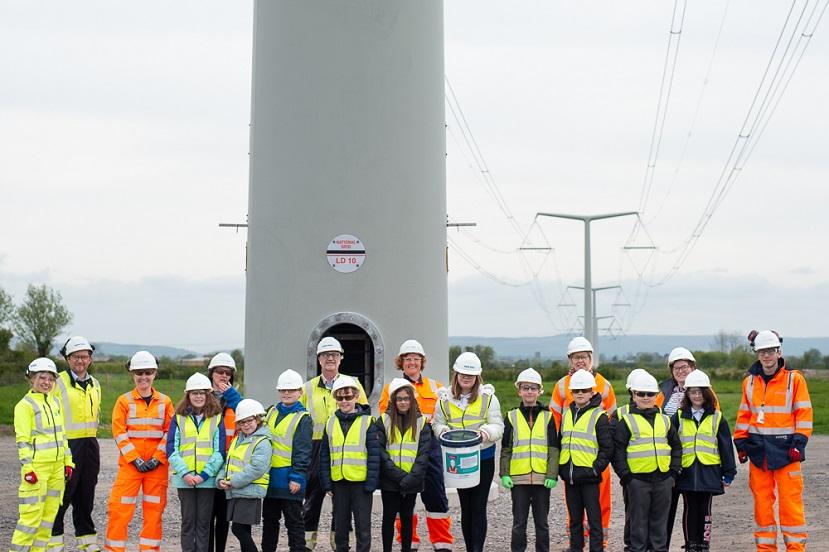
The Year 6s with the National Grid and Balfour Beatty teams in front of 'their' T-pylon |
Image
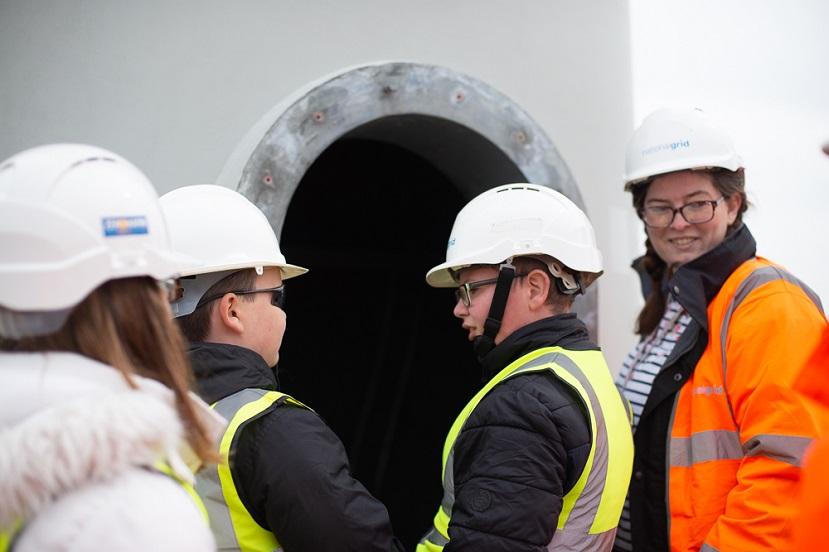
A peek inside the stem of the T-pylons | Image
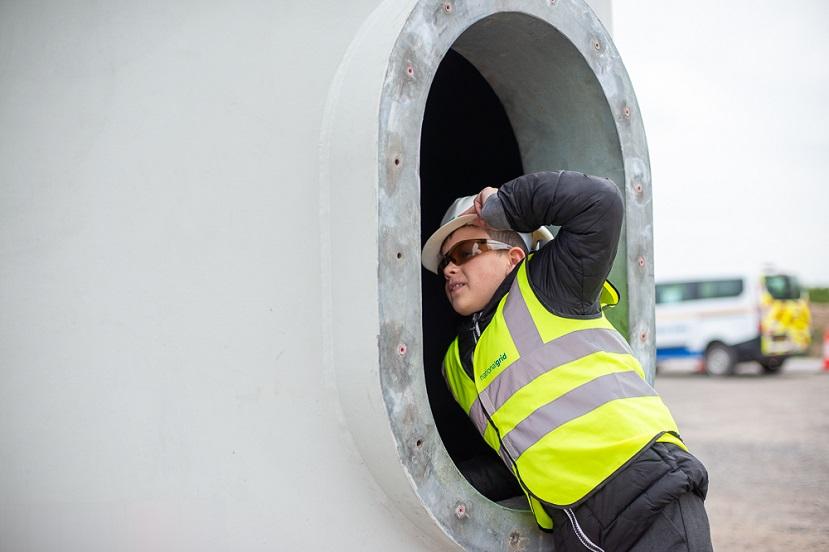
A peek inside the stem of the T-pylons |
Image
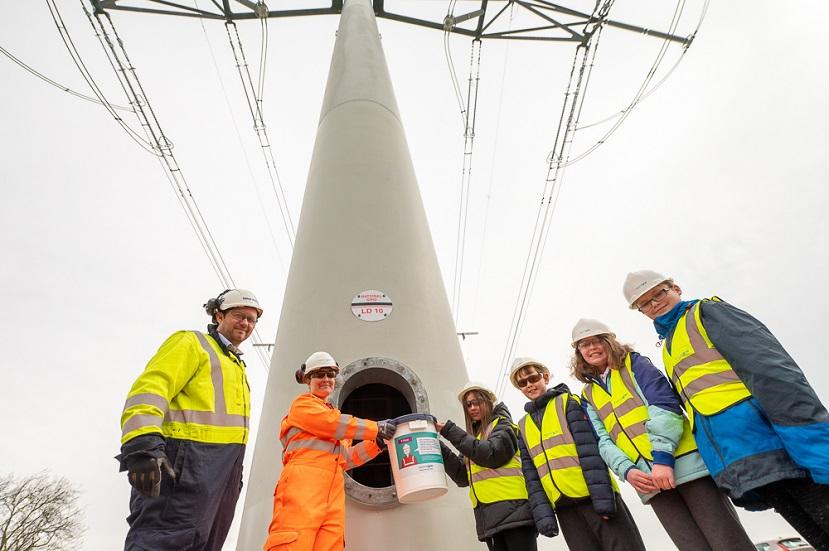
Pupils present the time capsule to Harriet and Julian Hutchinson | Image
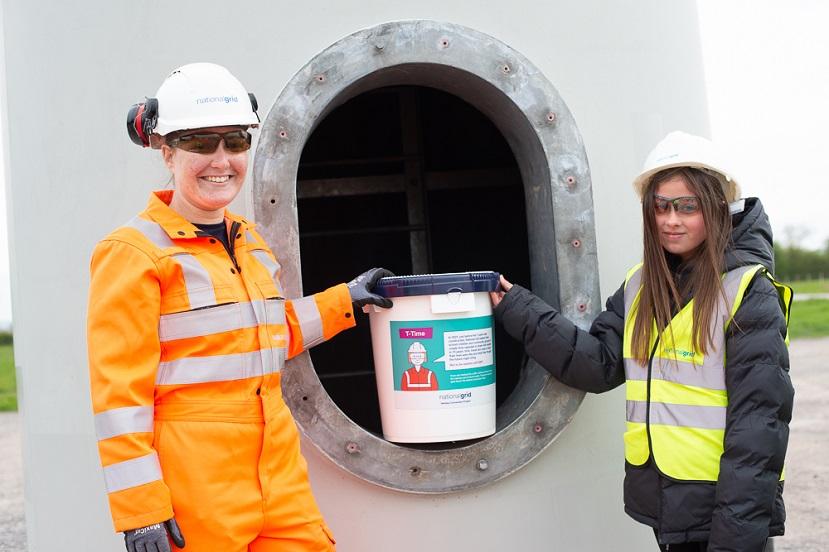
Harriet Dal Din is presented with the time capsule |
Image
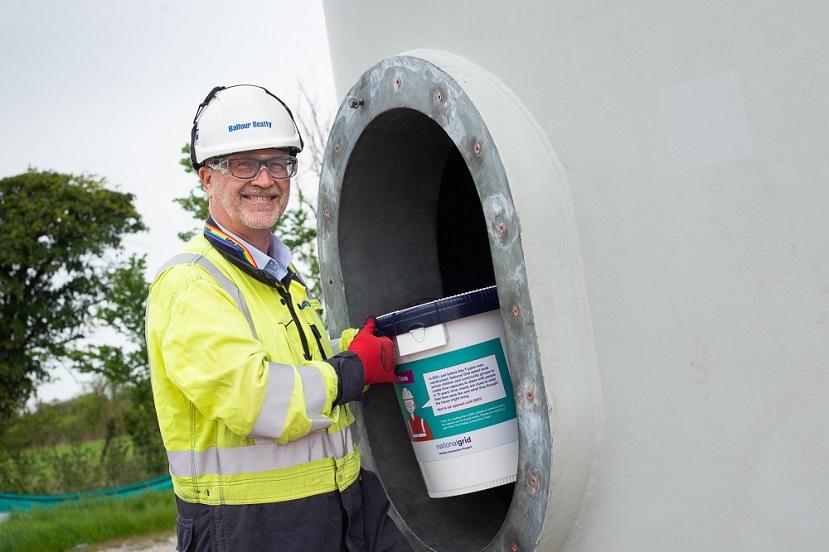
Rob Stephenson places the time capsule inside the T-pylon | Image
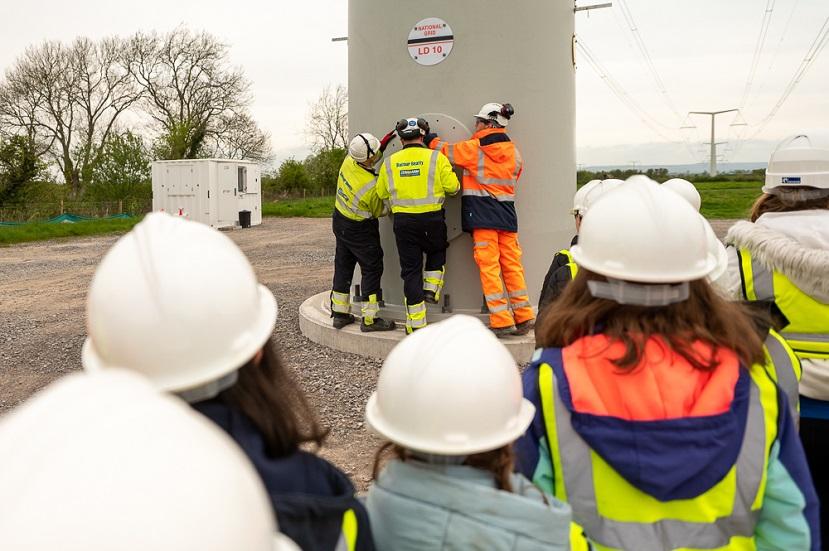
The hatch is bolted on with the time capsule inside |

